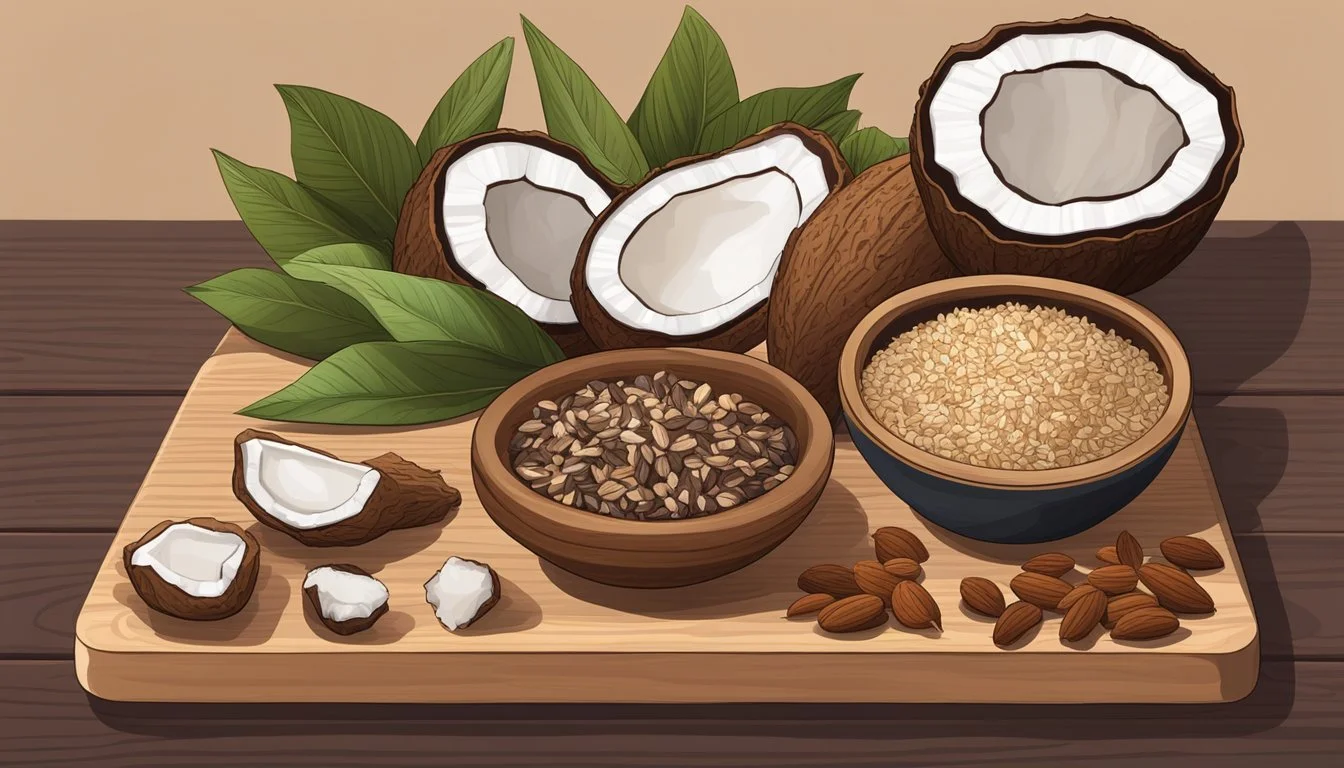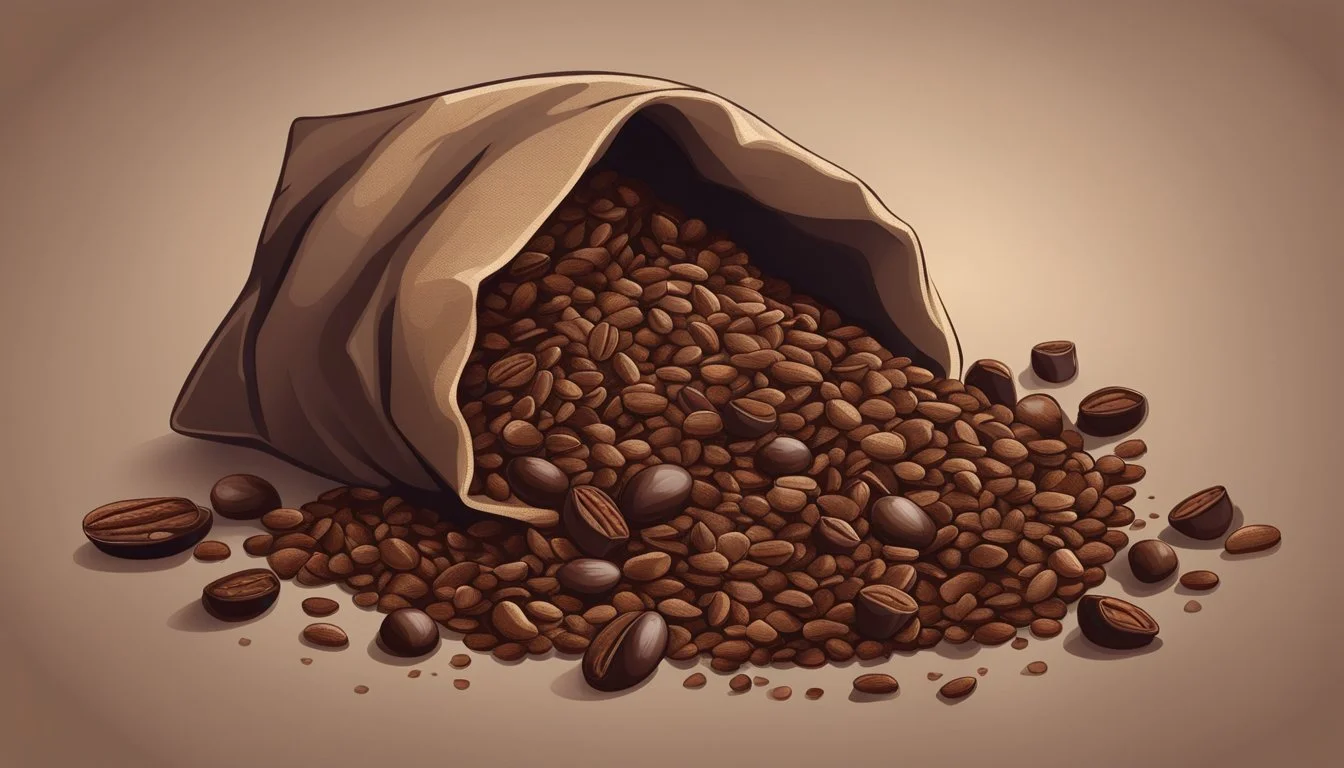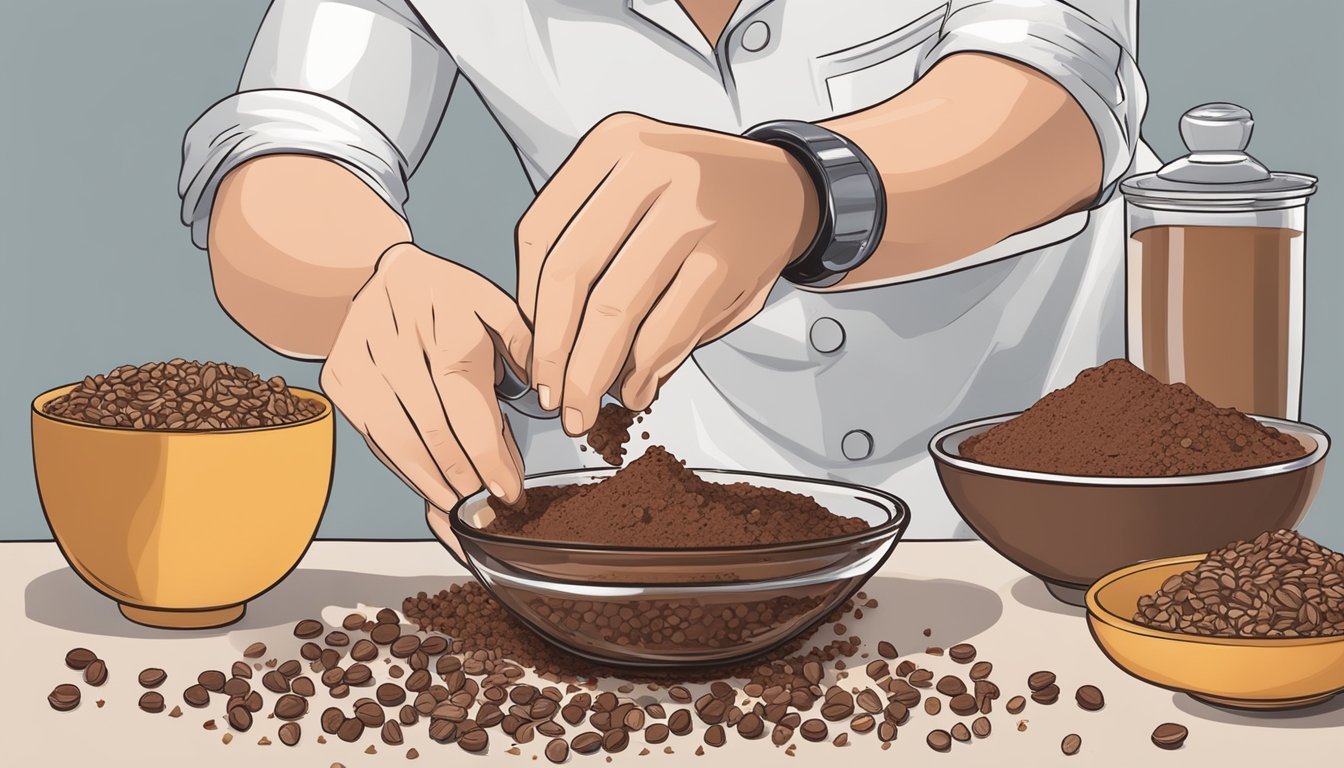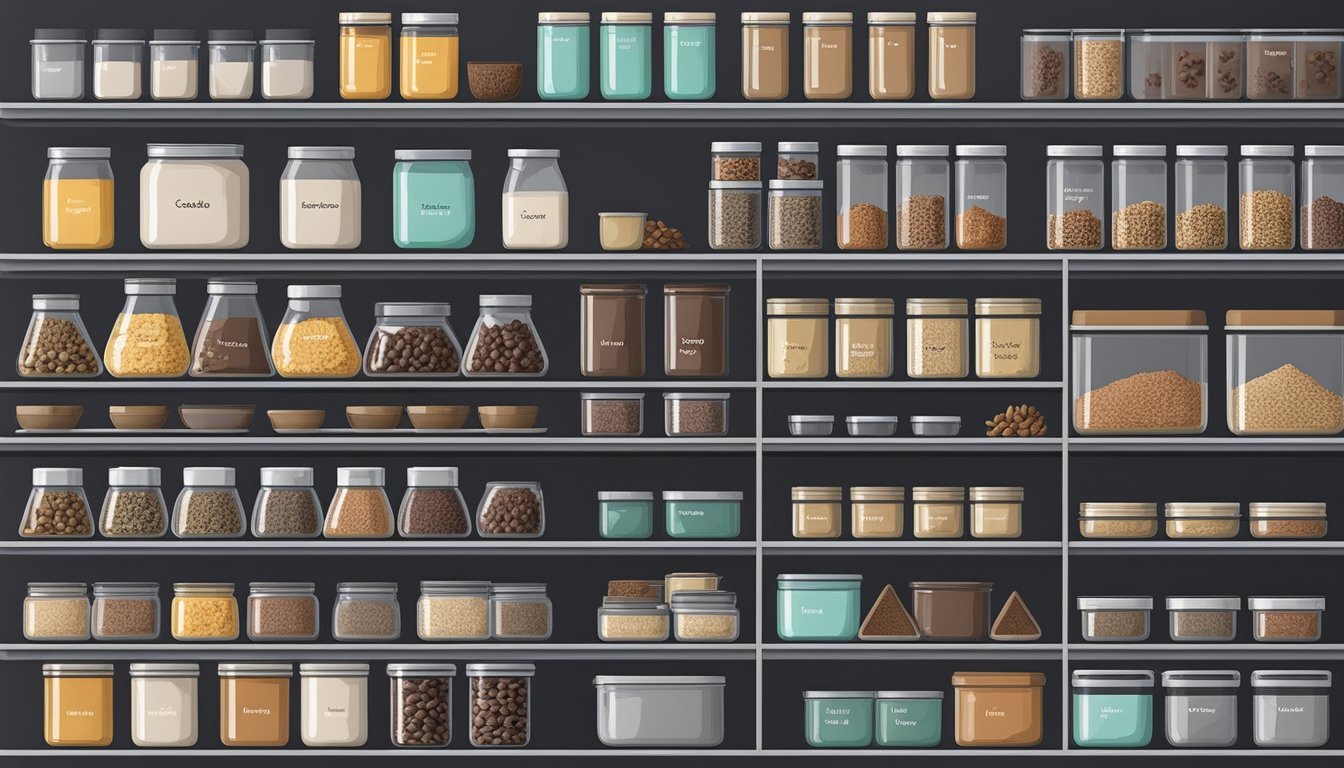Cacao Nib Substitutes
Best Alternatives for Your Recipes
Cacao nibs are cherished for their rich flavor and nutritional benefits, often used to add a chocolatey dimension to various recipes without the added sweetness of traditional chocolate (What wine goes well with chocolate?). These crushed pieces of cacao beans are integral to certain dishes, but sometimes they may not be readily available, or someone might seek an alternative taste or texture. It's important for culinary enthusiasts to recognize suitable substitutes that can mimic or complement the unique characteristics of cacao nibs.
Many alternatives can serve as effective replacements without compromising on taste or quality. Chocolate chips are a common go-to due to their similar cocoa profile, making an easy swap for those who don't mind the addition of sugar. On the other hand, for a less processed option, whole cacao beans can be used, as they are essentially the source of the nibs and carry the same deep, chocolate essence. For those looking to maintain the texture but explore outside the cocoa family, toasted nuts, such as walnuts, can offer a comparable crunch and bitterness.
When substituting, it's crucial to consider the other ingredients of the recipe to ensure a harmonious blend of flavors. While chocolate chips and dark chocolate can offer a sweetness that pairs well with baked goods, alternatives like carob chips and vanilla beans bring in a different but equally rich profile, suitable for smoothies and toppings. The key is to maintain balance and keep the integrity of the dish, so using substitutes in the right ratio is essential.
Cacao Nib Basics
Cacao nibs are derived from the seeds of the Theobroma cacao tree and carry a rich nutritional profile.
Understanding Cacao Nibs
Cacao nibs are essentially small pieces of crushed cacao beans which have been harvested from the pod of the Theobroma cacao tree. They undergo a process of fermentation, drying, and sometimes roasting. These steps highlight the nibs' natural chocolate flavor without the addition of sugar or other additives traditionally found in processed chocolate.
Raw cacao nibs maintain a more intense flavor and retain a higher level of phytochemicals compared to their processed counterparts. They offer a crunchy texture and a complex flavor profile that is both slightly bitter and nutty, making them a versatile ingredient in various culinary applications.
Health Benefits of Cacao Nibs
Cacao nibs come with a robust nutritional content, notable for their concentration of antioxidants and magnesium. Antioxidants help in combating oxidative stress, reducing the risk of chronic diseases, while magnesium plays an essential role in over 300 enzymatic reactions in the human body, including muscle and nerve function.
Antioxidants: Cacao is rich in flavonoids, a type of antioxidant with potential anti-inflammatory properties.
Magnesium: This essential mineral contributes to energy production and supports bone health.
Because they are minimally processed, cacao nibs retain a substantial amount of these healthful compounds, offering a potent source of nutrients in a small, versatile form.
Suitable Cacao Nib Substitutes
When a recipe calls for cacao nibs, and they're not available, there are several ingredients that can be used as a fitting substitute. Each alternative offers its own unique flavor and texture nuances that can complement various recipes.
Chocolate Chips as Substitutes
Chocolate chips are a readily available option that closely mimics the texture of cacao nibs. For those looking for a similar crunch with a sweeter profile, semi-sweet chocolate chips can be used in a one-to-one ratio. They are especially suitable in baking where the chocolate flavor is prominent.
Nuts and Nut-Based Substitutes
Nuts such as toasted walnuts provide a similar crunch and texture to cacao nibs, with a different flavor profile. They can be chopped and measured equally in place of cacao nibs for a nutty twist to the recipe. Additionally, roasted cocoa beans, sometimes referred to as cacao beans, are an excellent straight swap for cacao nibs.
Sweet Alternatives to Cacao Nibs
For those who prefer a sweeter flavor, carob chips act as a natural sweetener and have a taste reminiscent of chocolate but with a uniquely sweet, caramel-like flavor. They can be substituted in a one-to-one ratio for cacao nibs, imparting a sweet and slightly fruity flavor.
Grain-Based Substitutes
While not as common, certain grain-based options like crushed pretzels or toasted oats can substitute for cacao nibs in terms of texture. These should be used cautiously, as they impart a different flavor and are best suited in recipes where their unique taste can be appreciated.
Considerations When Choosing Substitutes
When selecting a substitute for cacao nibs, it is important to consider the desired outcome in terms of flavor, texture, and dietary restrictions. These aspects will guide you to the most suitable alternative for any given recipe or dietary need.
Flavor Profiles
Cacao nibs are known for their rich, bitter chocolate flavor. Substitutes should ideally match this complexity without overpowering the other ingredients. Dark chocolate chips can be a close match, imparting a similar chocolate intensity and a hint of sweetness. In contrast, cacao powder offers a milder chocolate profile, suitable for recipes where a more subdued chocolate taste is acceptable. Choices like roasted cacao beans maintain the authentic cacao flavor but may alter the intended taste due to the roasting process.
Texture Concerns
Texture plays a significant role in replicating the mouthfeel of cacao nibs, which provide a crunchiness to dishes. To emulate this crunchy texture, options such as toasted walnuts can be effective, adding both texture and nuttiness. For a velvety texture, melted dark chocolate or chocolate liqueur can serve as alternatives, although they lack the crunch. It's important to experiment with proportions when substituting to avoid issues like dryness or excess moisture.
Dietary Considerations
For individuals with chocolate allergies or those who cannot consume cacao nibs, finding a suitable replacement can be challenging. Carob chips are a popular allergen-friendly option that resembles chocolate but is naturally sweeter. The availability of substitutes may also depend on geographic location and local markets; thus, non-availability of specific products may necessitate creative substitutions. It's crucial to read labels and ensure that the chosen alternative meets any dietary restrictions, such as being sugar-free or vegan.
Using Substitutes in Recipes
When incorporating substitutes for cacao nibs in recipes, it's essential to understand that each substitute behaves differently depending on the dish. Factors like texture, sweetness, and melting point must be considered to maintain the integrity of the original recipe.
Baked Goods
For recipes that involve baking, such as cookies, brownies, or pastries, substitutes should retain a similar texture to cacao nibs. Options include:
Chocolate Chips or Callets: They melt smoothly and can be measured 1:1 for cacao nibs.
Chopped Chocolate Bars: Choose dark chocolate for less sweetness.
Carob Chips: Offer a similar texture with a naturally sweet, caramel-like flavor.
In recipes like cake batter, the substitute should not alter the desired consistency of the batter.
Beverages and Smoothies
For beverages or smoothies, the focus shifts to the flavor profile rather than the texture because the solid nibs would be blended into liquid form. Suitable substitutes are:
Cocoa Powder: It easily incorporates into liquids for a rich chocolate flavor.
Carob Powder: A sweeter, caffeine-free alternative that readily dissolves in beverages.
Adding these to yogurt or oatmeal can also contribute a subtle chocolate taste reminiscent of cacao nibs.
Other Culinary Creations
In desserts such as ice cream, puddings, or as toppings for cereal, the choice of substitute can greatly influence the final product.
Chopped Nuts: They add a crunchy texture and are ideal for toppings.
Vanilla Beans: While not chocolatey, they impart a rich, aromatic flavor to the dish.
For each dish, consider the melting points of these substitutes and whether they complement the main ingredients.
Additional Tips for Cooking with Substitutes
When substituting cacao nibs in recipes, a cook must consider sweetness, aroma, and consistency to achieve the desired result, keeping sugar content in mind.
Adjusting Sweetness and Aroma
Vanilla beans: Recognized for their aromatic profile, they can be used to complement or replace the richness of cacao nibs in various dessert recipes. Since they lack inherent sweetness, one might need to add sugar to match the desired taste.
Cacao powder: While an ideal substitute for its chocolate flavor, it often requires an adjustment in sugar content as it's more concentrated and less sweet than cacao nibs.
Texture and Consistency Adjustments
Chopped nuts: Offer a similar texture to cacao nibs. For subtler chocolate hints with a crunchy texture, toasted walnut pieces serve as a good alternative. Adjustments may be needed:
For every 1 tablespoon of cacao nibs, use 1 tablespoon of chopped nuts or toasted walnut pieces.
Keep an eye on moisture levels, as nuts can absorb liquid from batters.
Decorative Substitutes
Garnish and decoration: Substitutes can also impact the visual appeal of dishes. For those seeking a chocolatey flair without cacao nibs, consider these options:
Toasted walnut pieces: These add a nutty crunch and visual interest similar to that of cacao nibs.
Carob chips: Their chocolate-like taste and visual similarity make them a fitting decoration for sweets that originally call for cacao nibs.
Storage and Preservation of Substitutes
When it comes to storing chocolate chips, dark chocolate, or carob chips, it's essential to keep them in a cool, dry place away from direct sunlight. These items should ideally be stored at a temperature between 60-70°F (15-21°C) to maintain their flavor and prevent melting. The pantry is a good choice, but if the climate is warm, they may be better kept in an airtight container in the refrigerator. When refrigerated, these substitutes may absorb odors from other foods, so ensure the container is properly sealed.
Vanilla beans, prized for their rich aroma, must be stored with special care to preserve their quality. Wrap them in wax paper and then place them inside an airtight container. Store this container in a cool, dark area such as a spice cupboard. Avoid refrigerating vanilla beans, as this can cause them to dry out and lose their flavor.
For substitutes such as roasted cacao beans and cocoa powder, an airtight container is vital to prevent moisture, which can lead to spoilage. Like chocolate chips, they should be stored in a cool, dry place. If these substitutes contain potassium or other minerals, it's particularly important to avoid damp environments which can trigger reactions that might degrade these minerals.
Chocolate Chips (including dark chocolate and carob chips):
Store in a cool, dry place (60-70°F / 15-21°C).
Use airtight containers to avoid odors when refrigerated.
Vanilla Beans:
Wrap in wax paper and place in an airtight container.
Store in a cool, dark area - do not refrigerate.
Roasted Cacao Beans & Cocoa Powder:
Keep in an airtight container to avoid moisture.
Store in a pantry or similar environment.
Frequently Asked Questions
In this section, readers will find specific answers to common inquiries regarding cacao nib substitutes and their nutritional impact.
Common Substitute Queries
What can be used as a substitute for cacao nibs?
Dark Chocolate Chips: They offer a similar intense chocolate flavor and a hint of sweetness. Use them in a 1:1 ratio.
Cacao Powder: It maintains the chocolatey essence and can be used in place of nibs to achieve an intense chocolate flavor without the texture.
Carob Chips: With a sweeter taste and a flavor resembling chocolate, they're a nutritious option, used in the same quantity as cacao nibs.
How do these substitutes compare in taste to cacao nibs?
Dark Chocolate Chips: Sweeter with less bitterness.
Cacao Powder: More homogeneous chocolate flavor.
Carob Chips: Naturally sweeter, with a caramel-like undertone.
Health and Nutrition FAQs
Do these substitutes offer the same health benefits as cacao nibs?
Dark Chocolate Chips: May contain added sugars and fats, thus potentially offering fewer health benefits.
Cacao Powder: Retains a significant amount of nutrients found in cacao nibs, such as magnesium and potassium.
Carob Chips: Generally lower in fat and calories but do not provide the same levels of magnesium and potassium.
Are cacao nib substitutes a good source of magnesium and potassium?
Cacao Powder: Yes, it's a good source of both magnesium and potassium, as it is less processed.
Other Substitutes: While they may have some nutrients, they typically do not rival the magnesium and potassium content present in cacao nibs or less processed cacao products.
Conclusion
Finding an appropriate substitute for cacao nibs depends on the desired outcome in culinary creations. Versatility is key for a substitute to seamlessly integrate into a variety of recipes.
Chocolate Chips and Callets: When a recipe calls for a chocolatey crunch, chocolate chips serve as a direct stand-in for cacao nibs. Callets also provide similar convenience and can be measured in a one-to-one ratio.
Carob Chips: Boasting a naturally sweet and caramel-like taste, carob chips are an excellent alternative in baking, providing a unique flavor profile and similar texture.
Vanilla Beans: For dishes requiring a rich, aromatic touch without the chocolate intensity, vanilla beans emerge as a versatile substitute. Their distinct flavor enhances smoothies, cakes, and other confections.
Toasted Nuts: Walnuts, when toasted, can mimic the nutty and textural elements cacao nibs contribute to dishes.
Culinary enthusiasts may experiment with these options to tailor the taste and texture of their creations. Each substitute must be chosen with consideration of the overall flavor harmony in the final dish.







